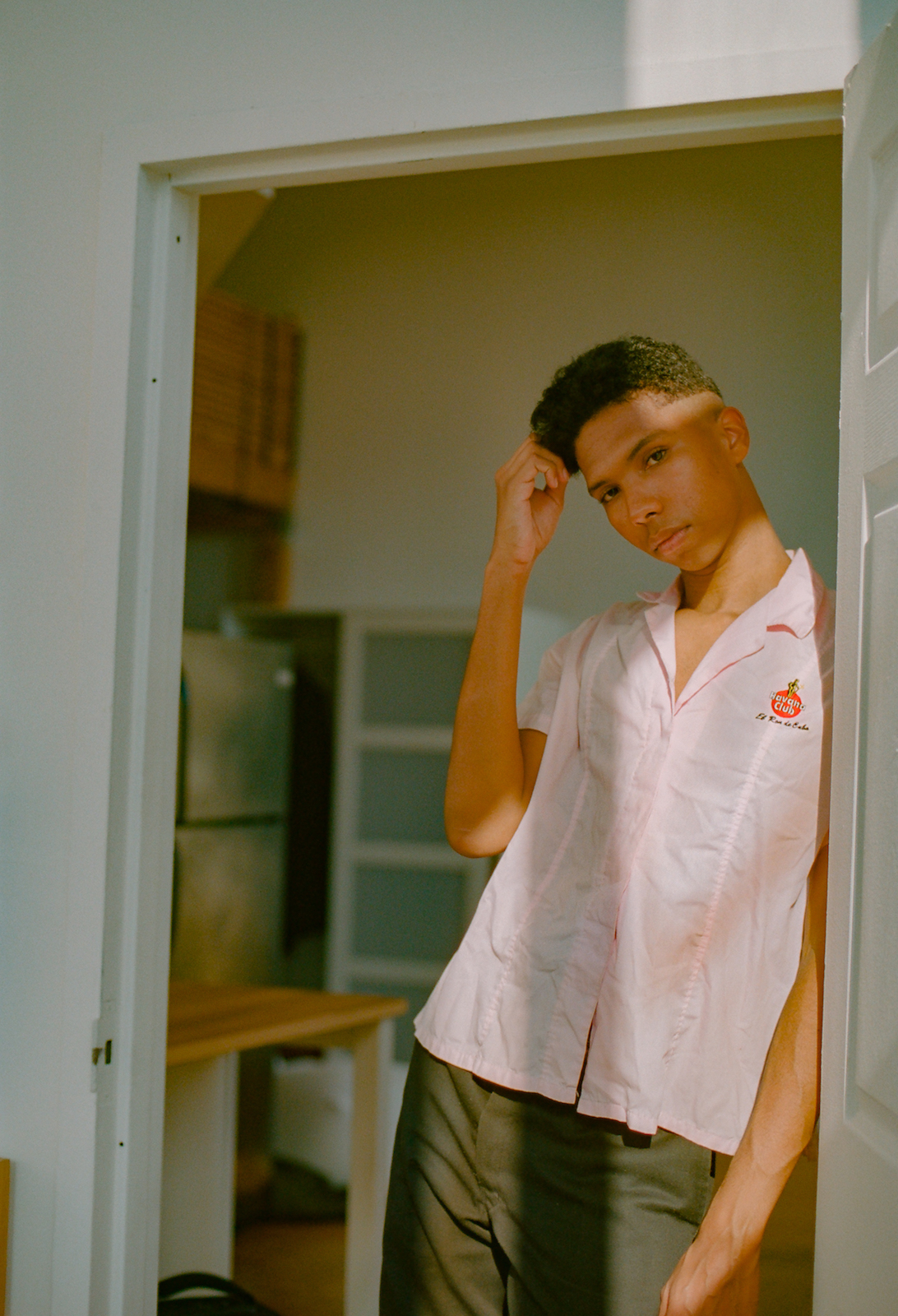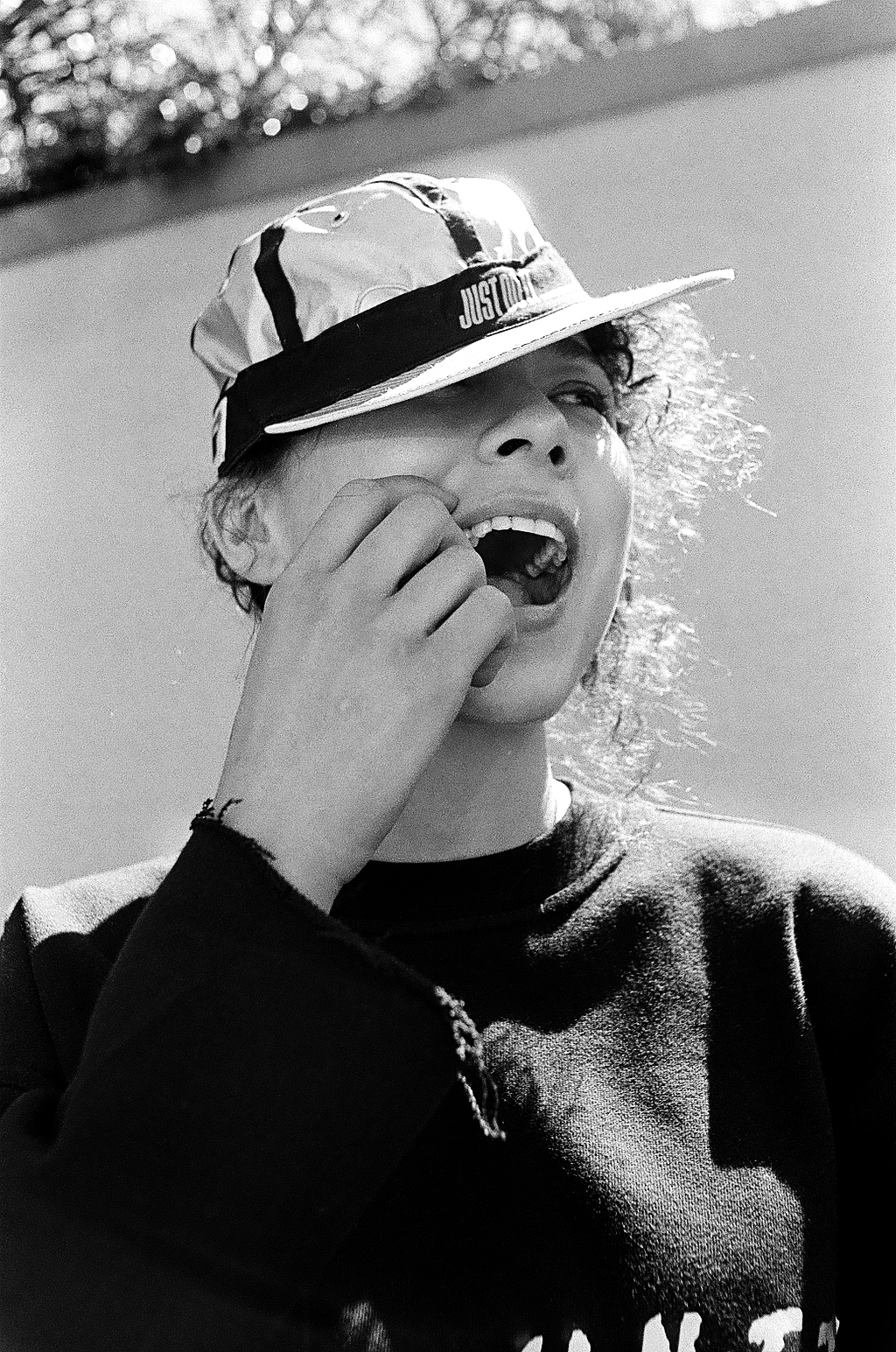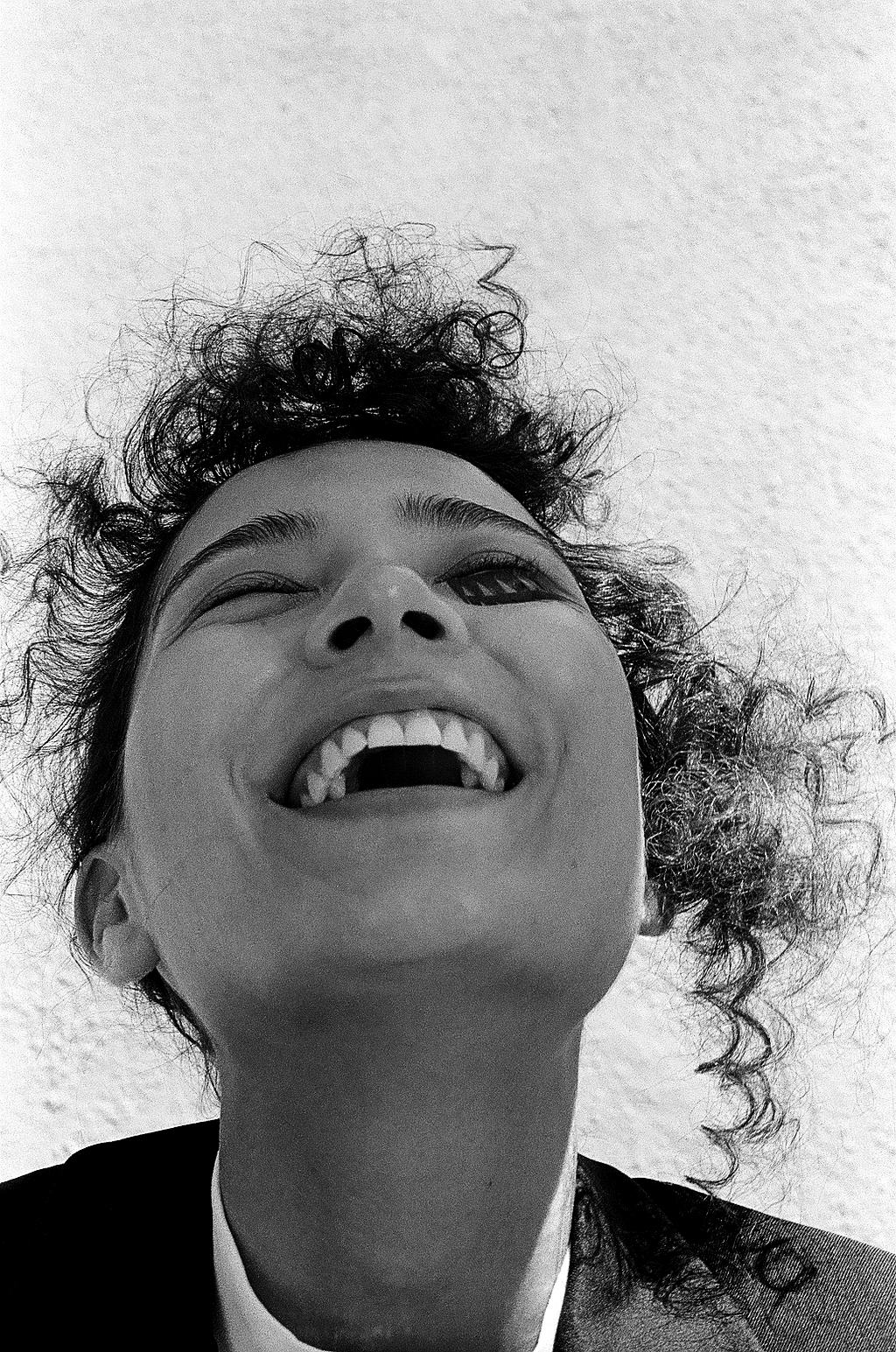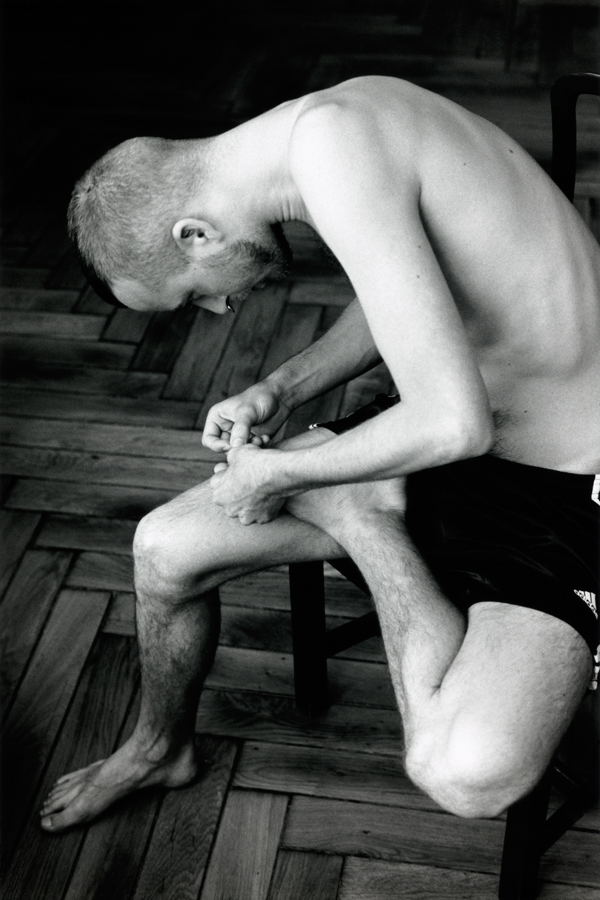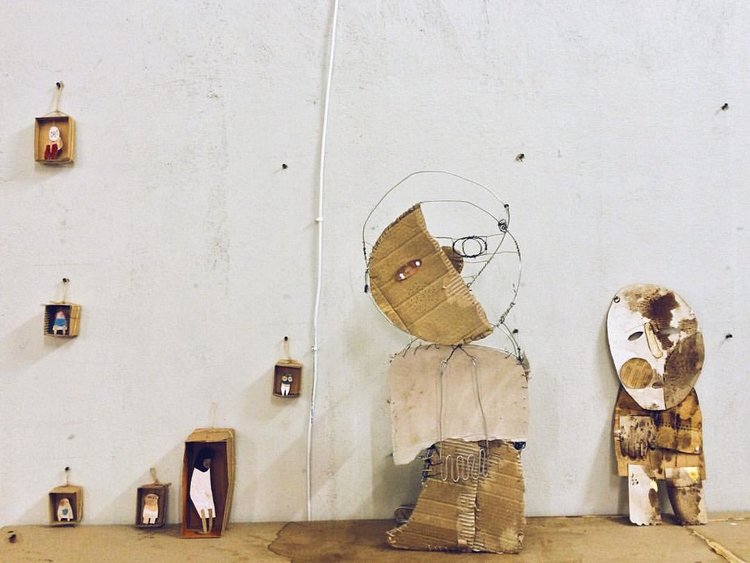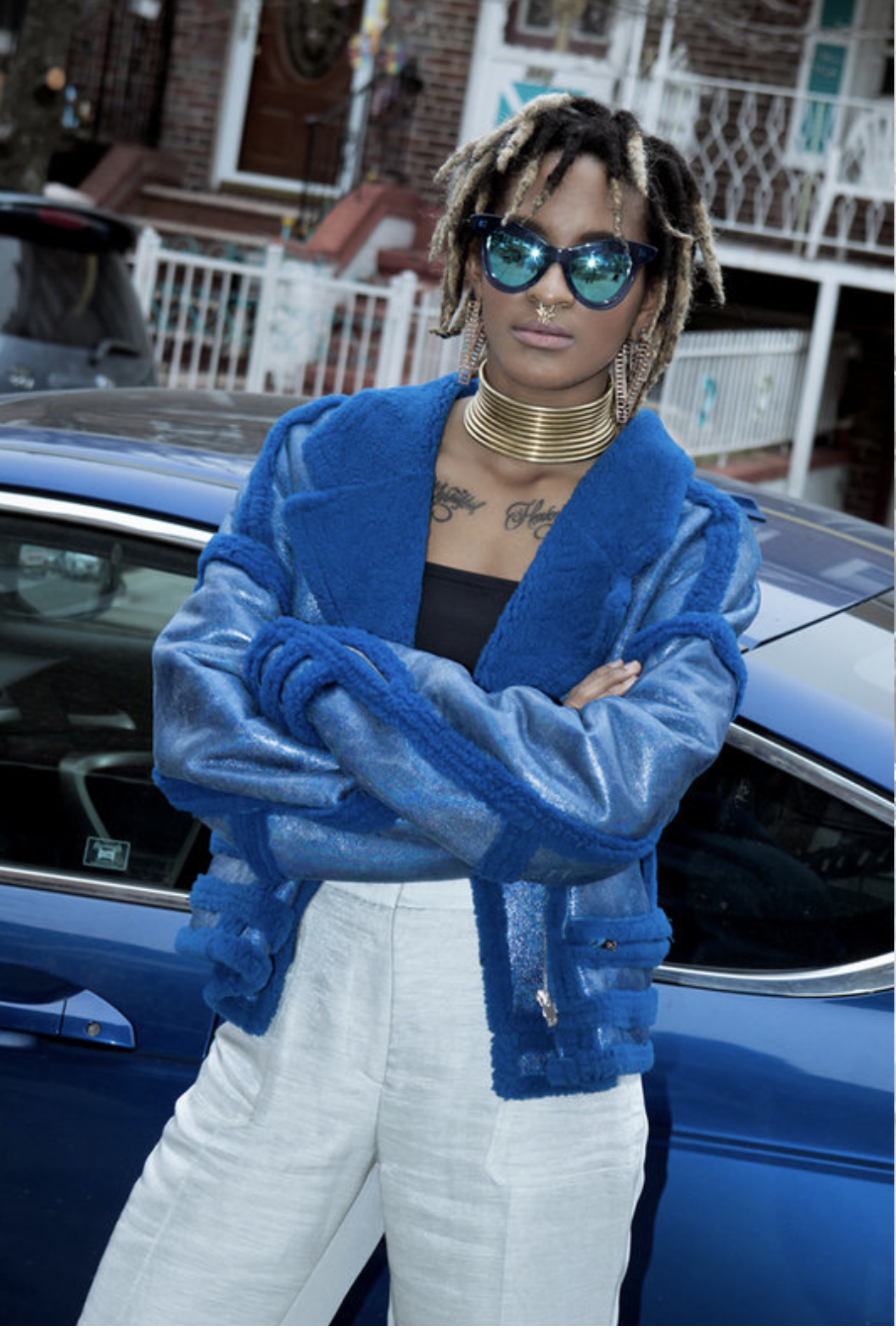Individuals captured with an emotionality that becomes known to the viewer – these artists become a kind friendly face that you passed by once and stuck in your memory. Nostalgia. Attention halting. You wonder about them. Who could they be? The photographer invites you not only to see his lensed personalities but to see a glimmer of himself as creator. Deep sentimentality and a small hope that the current times will be remembered for many years to come. You see his striking signature expressed in soft portraits compositionally defined with minimalist aesthetic choices and traditional framing. A trained hand pushes emotion with a sort of staged candid moment. Beautiful, riveting.
The practice of now, New York based photographer, Joshua Aronson (b. 1994) can be read in some ways, as a documentation of a moment in time, the moment that he reflects with his lens is that of the emerging artist community in various cities of the United States and beyond.
In 2017, Joshua became one of the youngest photographers to have their work published in The New York Times and The New York Times Style Magazine, then age 23. The act of image making started making its first insertion into Joshua’s life in 2013, when he began documenting his friends, local skate culture and musicians. On living in Miami Joshua shares “…there wasn’t really much to do down there. We kind of created our own scene.”
“I photographed my friends up until around the end of 2015, which is when I’d say things became more serious for me. I started to think about photography differently.”

After completing his Bachelor of Arts in Philosophy at Northwestern University he moved to Miami. It is here where he observed the lack of significance placed on the emerging artists of the city. Setting forth to create his first iteration in an ongoing series of images that give voice to these under celebrated young artists, his concept highlighting his first region of focus (15 of Miami’s next generation creatives) was featured on i-D Magazine soon after. Relocating to New York six months later, Joshua continued his documentation of the emerging artist community in this vicinity. While working in New York, Joshua studied under Ryan McGinley and received the title of Emerging Photographer — Spring 2018 from PDN.
The current emphasis of Joshua’s personal practice, the emerging artist communities of various cities in his country and more, is guided by an inclination to make his images feel personal, holding an emotional glimpse of himself as the author of these portraits. “I’ve found photographing young, emerging artists to be the best way of doing that. Of creating a self-portrait without really creating a self-portrait.”

In my interview with Joshua, he explains his belief behind why it is important to document emerging artists, “I’ve always felt that a photographer’s first task is to create a community.”
On his ever-expanding project, Joshua explains that after his first series on Miami’s emerging creative community the assignment pulled him into an ongoing process that he is still propelling forward to this day. His project has seen him cover emerging artists from Miami to New York, Chicago to Los Angeles and has even jumped to Tokyo.
Joshua’s opinion on emerging within the arts in New York is that it is “Special. It’s a really special time to be alive and creating at a young age. It’s important to recognize that. It’s important to look at your youth and ask how you can use your age as a way to inform the way you make and engage with the world.”

For him the validity of his pursuit lies in creating a document of our current times, addressing future enquiries into what it meant to be a young emerging creative within spaces such as New York City in the year 2018. He hopes that his work will address this very question and act as a reference to future thinkers.
“Truthful, honest, revealing. No artifice. I’m definitely not the first photographer to turn their lens onto their generation.”
“It’s about photographing my own generation, though, with a determination and fervour and freshness that calls attention to these images and, thereby, their subjects.”
Credits:
Photography by – Joshua Aronson



